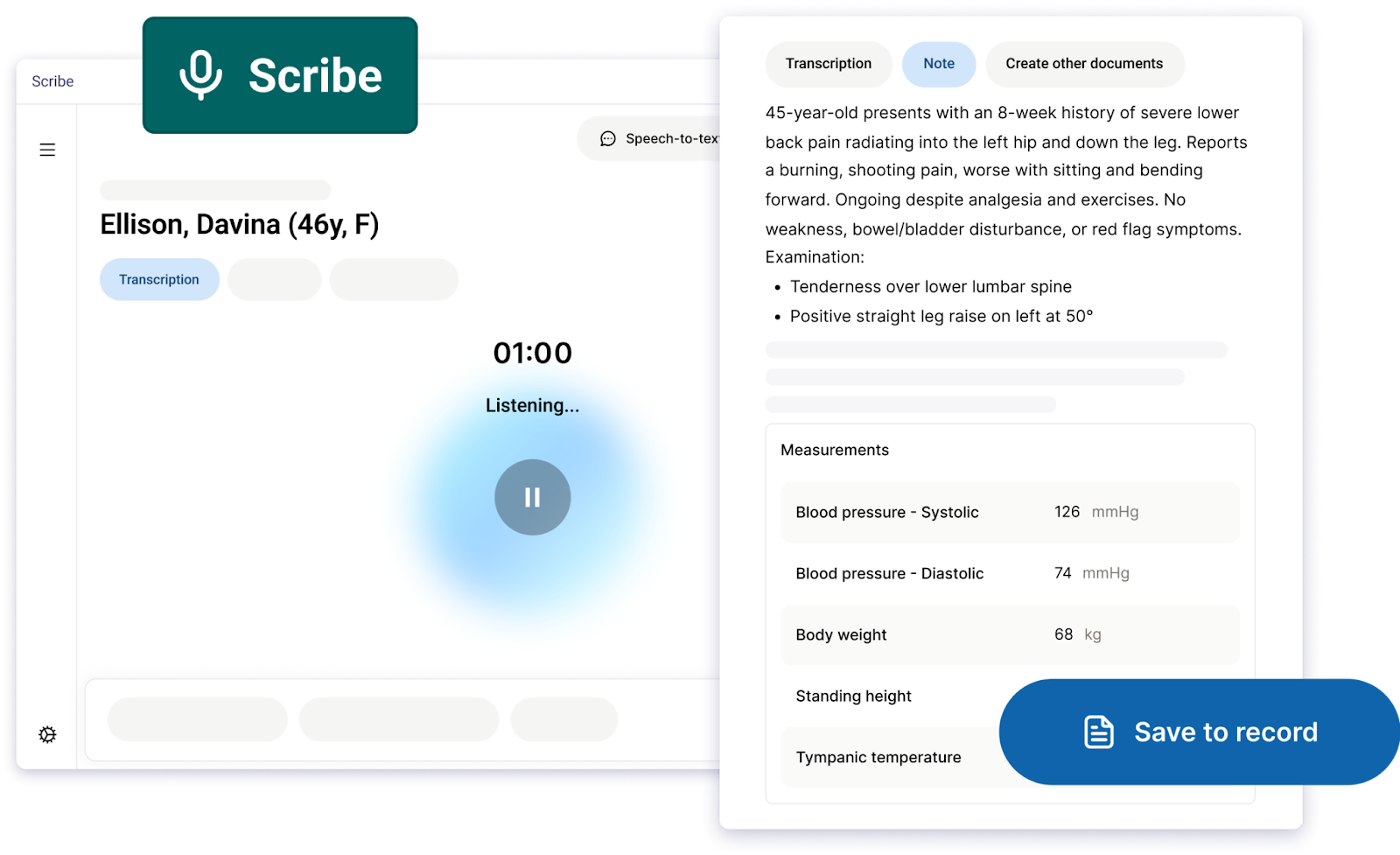Dr Faris Al-Ramadani is a GP Partner at St Wulfstan Surgery, one of the highest-rated practices in England and winner of the 2024 HSJ Primary Care Provider of the Year award. In this blog, Faris shares how the use of an AI Scribe, powered by Tandem, has changed his day-to-day consulting – giving him the breathing room to listen more closely, write less, and practice medicine in the way he was trained to.
I became a GP because I enjoyed speaking to patients – hearing their stories, working out what was wrong, and helping them get better. But with 10-minute appointments, I often had to split my attention. I’d try to listen while also typing up notes, clicking between screens, and making sure my documentation was up to scratch.
It often felt like I hadn’t given the patient everything they needed. And at the end of a busy clinic, I'd still have the admin from the clinic to sort ahead of me – converting notes into referral letters or writing up advice and guidance.
Using an AI Scribe has not just changed how I work – it’s helped me get back to what I love most; listening, understanding and helping patients.
Listening, properly listening
With the scribe, I can focus completely on the patient again. I ask if they're happy for me to use a microphone to capture the conversation – and explain that it means I won’t need to type. Patients are usually quite happy when they hear that.
And then I’m present. I’m making eye contact, I’m explaining things out loud – even simple observations like temperature or heart rate – because I want the scribe to capture it. But actually, this has made me realise how important those small moments of explanation are for patients. It’s something I wasn’t always doing before.
In many ways, it’s taken me back to how we were trained to consult – fully focused, with time to listen and space to think. As a trainee, you’d get 30 minutes to consult and write notes. Now, with the pressure of 10-minute appointments, something has to give. The scribe brings that breathing room back.
Find out how to get started with Scribe to save time and skip the typing.
Doing more of what matters
Of course, there’s a practical benefit too. The admin burden is real. We all know what it’s like to finish clinic and still face the struggle of typing up notes, referrals or letters. The scribe has changed that.
At the end of a consultation, the transcript becomes a complete note – with coded observations and a clear structure that I can review and save to the record with one click. Of course, I still need to review the notes and often make amendments, but it feels like the heavy lifting has been done for me. I can then convert the same note into referral or advice and guidance text with a couple of clicks.
Suddenly, the work that used to drag on after clinic is gone. I’m wrapping up on time, without carrying that pressure into the next hour.
And patients can feel the difference
What’s been most heartening is the feedback from patients. I’ve been actively asking how they found the consultation – and many have noticed a difference. One patient noted, “It made the conversation much more natural.” It’s a sign that consultations are starting to feel more relational again, rather than the transactional encounters they’ve gradually become.
The notes themselves are different now, too. They’re not just lines of clinical shorthand. They’re narratives – a version of the consultation that actually reflects what was said, in language that the patient understands. The hope is that this leads to better engagement, safer care, and more empowered patients.
Learn more about training, FAQs, governance, and clinical safety for Accurx Scribe here.
It takes a shift – but it’s worth it
No surprise: it’s not instant. There’s a slight learning curve – it took me several weeks to get used to it, and over a hundred consultations to really find my rhythm.
You start by making small adjustments. I’ve learned to think out loud more – verbalising observations like heart rate or blood pressure so the scribe picks them up. It’s a habit I’ve come to appreciate. It keeps patients better informed, and it makes the whole consultation feel more transparent.
What’s struck me most is how those small changes – those shifts in rhythm – have brought back the part of the job I enjoy most. Being present. Listening properly. Doing what I trained to do.
The start of something new

What’s exciting about Accurx Scribe is that it feels like it’s built on the same values that made Accurx so transformative in the first place – improving communication, not just through technology, but by enhancing the quality of every interaction. When you can focus more fully on the patient in front of you, the consultation flows more naturally.
And now, with Accurx Scribe, you can review the output, save it directly into the patient record, and even carry it through into onward communication – whether that’s a referral, advice and guidance, or a message to the patient. It brings everything together in one space, saving time, improving the patient experience, and making every interaction count.
That technology isn’t five years away anymore. It’s here now. And for me, it’s brought back the kind of consulting that made me want to be a GP in the first place.
Accurx Scribe is currently being piloted across England. If you don’t have access, see what steps you can take to get ready for Scribe while we’re getting it ready for you: find out how to get started now.
